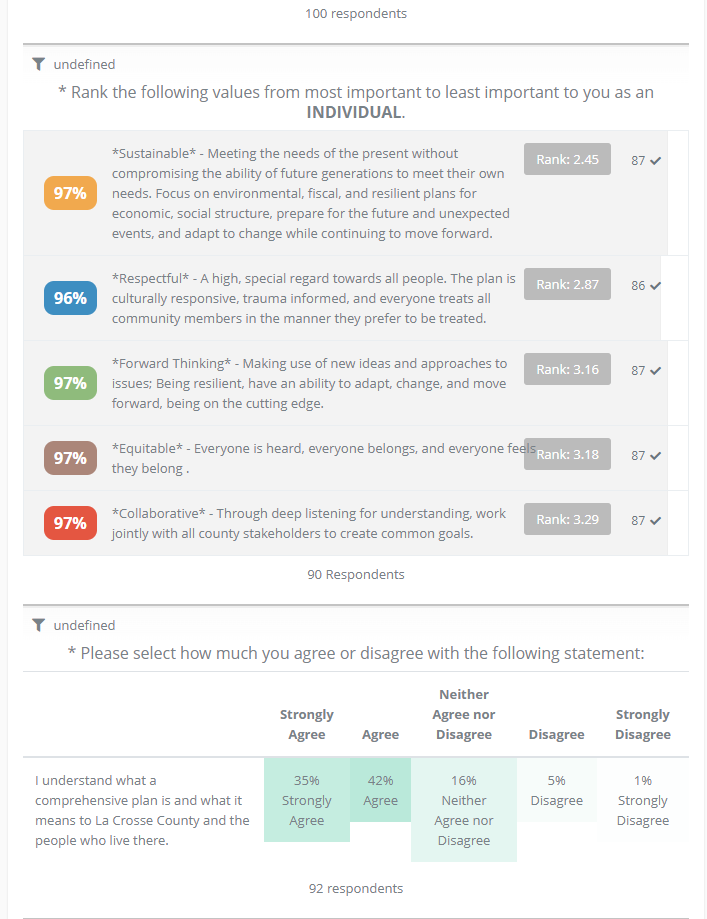Social Media: A Community Engagement Opportunity
State and local governments can seize the everyday opportunity of social media outreach and engagement by employing targeted methods to connect with residents using a centralized community engagement platform.
Using social media platforms for public outreach presents both challenges and opportunities. Here are few common challenges:
- Difficulty in predicting which demographics can be reached organically.
- Lack of clear methods to track whether social media interactions are leading to meaningful engagement.
- Manual accounting for social media, adds another layer of work.
- Integrating social media engagement into the broader context, such as alongside comments from meetings or surveys.
How to Increase Equity and Inclusivity with Social Media Outreach
Using the same technology as private sector brands and advertisers, state and local governments can leverage demographic information and geofencing to target residents and stakeholders online.
Whether based on language, income, age, or rural versus urban, nearly any characteristic can be targeted using social media to fill in demographic gaps.
A centralized solution can enable state and local governments to more efficiently address the challenges of integrating social media tactics. Using a centralized approach to community engagement allows governments to:
- Reach underrepresented populations
- Target potentially impacted communities
- Increase resident engagement
- Capture, organize, and analyze all input
Benefits of a Centralized Approach to Social Media and Community Engagement
With a few strategic clicks, social media can be used to enhance engagement efforts to target underrepresented voices and/or those living and working in impacted areas. Using community engagement software that integrates with social media platforms can make the difference between a successful initiative and one plagued by challenges. By creating a centralized place for community engagement methods and tactics, software can help governments:
- Expand resident reach and accessibility
- Better understand resident perceptions over time
- Remove manual inefficiencies in task and data management
- Increase the ability to make more timely, data-driven decisions
Integrating Social Media with Community Engagement Software
When incorporating social media into a community engagement strategy, several considerations can enhance equity and inclusivity. Here are several ways PublicInput centralizes community engagement and positively impacts outcomes:
1. Consolidates Comments Regardless of Source
Every voice should count, regardless of how a resident weighs in. Instead of manually accounting and aggregating social media comments, PublicInput integrates with platforms like Facebook, Instagram, and X, formerly Twitter to compile and catalog comments automatically.
This autonomous aggregation of comments streamlines the process for governments, bringing together data from social media alongside other collection forms like; surveys, emails, voicemails, and public meetings.

Above Image: PublicInput’s administrative dashboard provides the full view of engagement data from all sources of input.
2. Consolidates Engagement Analytics All In One Place
Centralized and all in one place, social media engagement data is available for tracking alongside public meeting attendance rosters, survey responses, voicemails, email comments, and SMS text responses. When housed together in this way, governments can quickly and easily understand public sentiment, perception themes, and respondent demographics.

Above Image: PublicInput’s automated sentiment analysis uses GPT and machine learning to categorize comments based on sentiment.

Above Image: PublicInput’s automated comment analysis uses GPT and machine learning to tag comments based recurring themes.

Above Image: PublicInput’s Equity Mapping solution uses public data like the US Census to map and identify demographic characteristics overlaid with engagement activity.
3. Enables Language Accessibility
Governments can easily publish translated posts and graphics on social media targeted toward residents with limited English proficiency. However, the challenge occurs when these populations submit comments and questions that need to be translated.
With PublicInput, all social media post comments are automatically imported and translated into English, saving governments both time and the precious translation dollars that would be better used for in-person interpretation.

Above Image: PublicInput automatically generates text and audio-based meeting meetings, which can be translated into over 100 languages with just a click of a button.
4. Easy and Efficient Reporting
Documenting and creating a public record of social media outreach can be an anomaly for government agencies. No more spreadsheets, screenshots, or separate filing formats. PublicInput offers a secure way to quickly and efficiently document and demonstrate engagement activity together with all of your other tactics.

Above Image: PublicInput’s dynamic reporting provides an automatic aggregated view of engagement data analysis.



